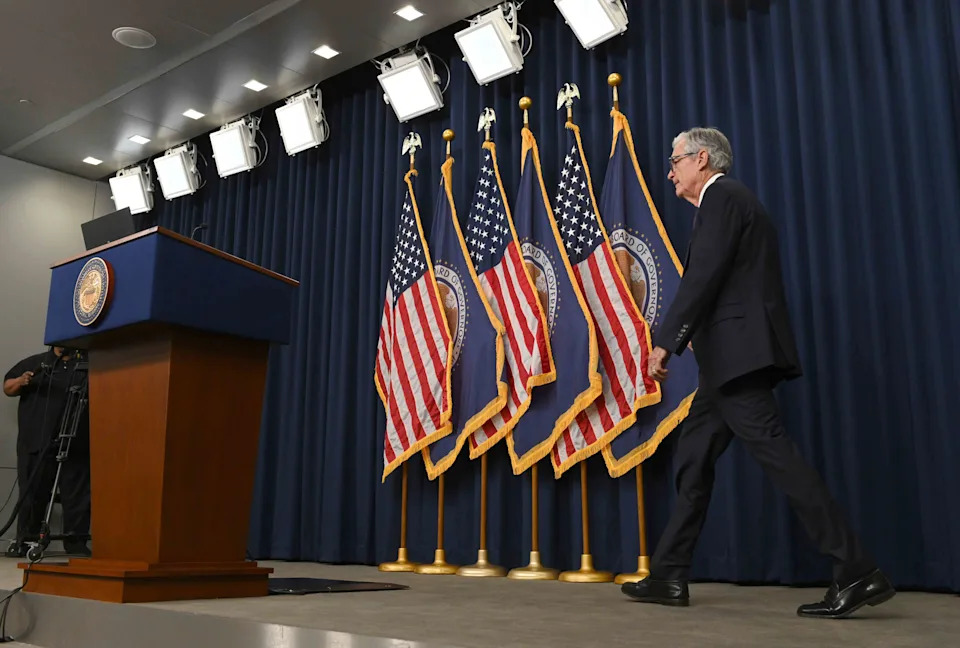News
Does the Trade Truce Between the US and China Change the Fed's Strategy?

Key Takeaways
The pause in the U.S.-China trade war has many investors doubting that the Federal Reserve will cut interest rates soon, since fears of an impending recession are easing.
Before the deal was struck, many thought the Federal Reserve's policy-setting committee would cut its influential federal funds rate this summer to stimulate an economy expected to deteriorate under the weight of tariffs. However, with the agreement alleviating some of the highest import duties on one of the country's biggest trading partners, economists and traders have pushed out those forecasts.
There’s still a path for the Fed to lower rates later this year, analysts say, citing the potential for a slowdown as still-high tariff rates weigh on economic activity. But for a Fed that was already in “wait-and-see” mode, the thawing should help avert the type of large-scale layoffs that would bring the Fed to the economy’s rescue, they say.
“We no longer think that the FOMC will see enough deterioration in labor market conditions to cut in the next few months,” Barclays chief U.S. economist Marc Giannoni wrote in a note to clients, forecasting the Fed will wait until December to cut interest rates.
Bill Adams, chief economist at Comerica Bank, doesn’t expect the Fed to cut rates at all this year. Recession risks looked “uncomfortably high” last month, but they’re significantly lower after the U.S.-China trade tensions simmered down, he wrote in a research note.
Bond markets are still eyeing at least one Fed cut this year, even as they start pricing in chances of a longer Fed delay. The CME Group’s FedWatch tool shows only a 7% probability of the Fed staying steady until December, with 26% seeing at least one quarter-point cut by then, 38% seeing two and 29% anticipating three cuts or more.
Forecasters are also split on how the Fed will conduct monetary policy following the trade agreement with China. Much of it will depend on how inflation and the labor market evolve.
The Fed May Wait Until December or Later...
Giannoni, the Barclays economist, said he sees “the economy sidestepping a recession” even if growth slows in the months ahead.
The unemployment rate should end the year roughly flat at 4.3% this year, he wrote, giving the Fed little reason to stimulate growth further. And though inflation is on the way down—April’s data was the latest sign —it remains above the Fed’s 2% target. The Consumer Price Index rose 2.3% in April compared to a year earlier, the lowest rate since February 2021.
The Fed will likely wait “until it sees enough moderation in monthly inflation prints to gain confidence” that it is fully quelled, he wrote.
Despite rolling back 145% tariffs against China, the agreement reached over the weekend still includes a 30% tariff. The administration has also made it clear that 10% tariffs are the lowest they're willing to go in negotiations with other countries.
The remaining tariffs will “begin to raise prices meaningfully in future months,” Ronald Temple, chief market strategist at Lazard, said in emailed comments.
“Today’s inflation print reaffirms my view that the Fed will not cut rates this year,” Temple said.
... Or It May Take Action Sooner
Few see the Fed being forced to cut rates this summer, but some analysts see higher chances of Fed action soon after as growth starts cooling.
Though tariffs on China may no longer be sky-high, the average U.S. tariff rate on imports from foreign countries is now 16%, up from 3% at the end of last year, according to Samuel Tombs, chief U.S. economist at Pantheon Macroeconomics.
“Constantly shifting and seemingly ad hoc trade policy also perpetuates high levels of uncertainty for businesses, which likely will stifle hiring and investment,” he wrote this week.
One major hurdle toward the Fed cutting has been the potential for tariffs to drive inflation upward, but ING economist James Knightley wrote in a research note that the de-escalation of trade tensions should tamp down those worries.
“Inflation will be less of an issue for the Federal Reserve and the scope for Fed rate cuts remains,” he wrote, forecasting a Fed cut in September.
Read the original article on Investopedia

